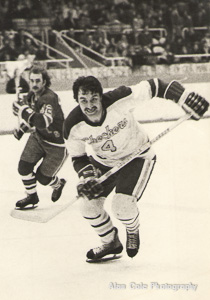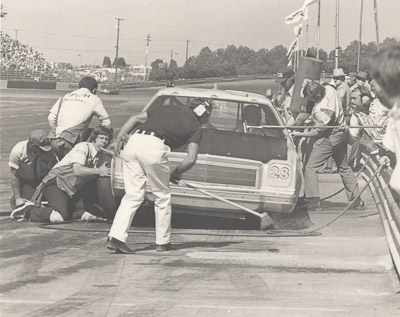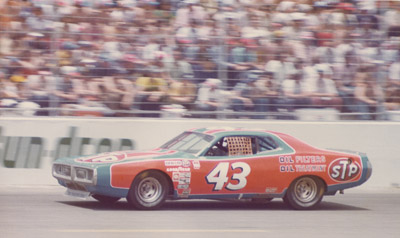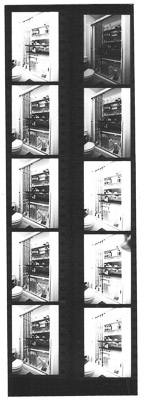How often does one win the lottery without buying a ticket? I did when our 15-year-old daughter asked me to teach her about film photography because she didn’t have time to take the class in high school. She had seen students’ work posted around school and wanted to try her hand, but didn’t have enough schedule for the elective after cramming in everything else wanted – and had to – take.
Enter Dad, with an accordion file full of my old work and a chance to spread the joy of seeing one’s own creation come up at the bottom of a developer tray. Dad isn’t completely old-school, though, so I decided that our journey into, and back into, the darkroom might be interesting to others who are sure to get the film photography bug. Enjoy our trip that I’ll update you on as I make time in my own full schedule that now includes another project.
 A bit about my background before we start. I saw a witticism on blogging that said, “Never before has so much been written by so many for so few.” Since you’re reading this, that means that at least one person at least started out reading what I wrote. And like a lot of the one or more of you who read on, my photographic upbringing includes familiar phrases like: family Instamatic, Dad had a darkroom in the basement of his family’s home (but without running water), Dad’s Argus C3, hockey games, football games, the August Jam rock concert (more in some later post – with some photos), NASCAR races (insert the name of the events where you and your camera snuck closer than you were allowed), sold photos to brother’s peewee hockey team parents after developing and printing all night in my bathroom darkroom, high school newspaper staff, high school yearbook staff, friend’s wedding, Popular Photography, the Amateuer Photographer’s Handbook, a Yashica MAT-124 that my Granddad gave me, a Yashica TL Electro-X that I bought myself, a Nikon F2 because it would make me a better photographer like the pros, joined the Navy, saw part of the world and photographed new places, had a family, reverted to point-and-shoot and VHS-C because those things needed the movies that are unwatched to this day, waded into digital, made enough shooting to support the habit, daughter hit high school, saw the work coming out of the film photography classes and asked Dad to teach it to her.
A bit about my background before we start. I saw a witticism on blogging that said, “Never before has so much been written by so many for so few.” Since you’re reading this, that means that at least one person at least started out reading what I wrote. And like a lot of the one or more of you who read on, my photographic upbringing includes familiar phrases like: family Instamatic, Dad had a darkroom in the basement of his family’s home (but without running water), Dad’s Argus C3, hockey games, football games, the August Jam rock concert (more in some later post – with some photos), NASCAR races (insert the name of the events where you and your camera snuck closer than you were allowed), sold photos to brother’s peewee hockey team parents after developing and printing all night in my bathroom darkroom, high school newspaper staff, high school yearbook staff, friend’s wedding, Popular Photography, the Amateuer Photographer’s Handbook, a Yashica MAT-124 that my Granddad gave me, a Yashica TL Electro-X that I bought myself, a Nikon F2 because it would make me a better photographer like the pros, joined the Navy, saw part of the world and photographed new places, had a family, reverted to point-and-shoot and VHS-C because those things needed the movies that are unwatched to this day, waded into digital, made enough shooting to support the habit, daughter hit high school, saw the work coming out of the film photography classes and asked Dad to teach it to her.
 And here we are.
And here we are.
Now comes the wonderful chore of turning our tiny basement bathroom into a 2-person wet darkroom classroom. My wife thinks I’m a kid who’s found the toy I lost 35 years ago when I “aged out” of souping Pan-X, pushing Tri-X and printing in my parents’ second bathroom, donated on a regular basis to their son’s craft. Donated for a number of reasons, love being one and their desire to keep me from pursuing other forms of teenage entertainment another. Twenty years ago I’d have hit the yard and estate sale circuit and used gear departments of KEH, B&H, Pacific Image Camera and the like to cobble together a setup. Today I hit the Bay to relieve people of choice goodies pulled from boxes full of junk taking up space in the corners of their garages. It’s a mutual win and I don’t have to burn $3.79 gas (in 2013 dollars) driving all over the region.
 You’ll remember, if you’re relatively well-seasoned, that we used to read books, scour the articles and ads in Pop and Mom Photo, write to manufactures asking for literature and bug salesmen in camera stores to find out what gear was available and what techniques worked best. That’s been replaced in the 21st-and-a-half-century by trolling the Internet (contributing happens later). Extra points if you recognize the previous reference to a very specific part of your childhood.
You’ll remember, if you’re relatively well-seasoned, that we used to read books, scour the articles and ads in Pop and Mom Photo, write to manufactures asking for literature and bug salesmen in camera stores to find out what gear was available and what techniques worked best. That’s been replaced in the 21st-and-a-half-century by trolling the Internet (contributing happens later). Extra points if you recognize the previous reference to a very specific part of your childhood.
About those ads that took up so much of our time; remember Porter’s Camera Store? I spoke last week with a wonderful lady there named Mickey, who said that they’re bowing out after 96 years. This Internet thing that we thought might be a fad has been a mixed bag, indeed. Thanks, Porter’s, for helping us cut our teeth on one of the best hobbies around. Some of the icons I remember are still with us; KEH, which had those great used camera ads and Freestyle, where we could find all manner of fresh and outdated film to respool and a like range of paper on which to print. Or Spiratone with $49.95 fisheyes and $60 400 6.3’s which, for an additional 10 bucks you could get multicoated. I don’t think I sprung for the coating, or that nifty shoulder stock…
An early thing I learned as I started poking around looking for enlarger recommendations is that what used to be photography is now analog photography; the phrase obviously coined to distinguish film craft from digital. I also learned that photography the hard way is far from dead. Sure, it has consolidated resulting in less variety in film emulsions and sizes, but I’ll work with what I can get my hands on without breaking the bank. I’ll substitute tanks, trays and chemistry for the computer and Photoshop, and a grain focuser for Unsharp Mask .
 The months ahead are full of opportunities that include squeezing dry side, wet side and a place for the instructor to stand into a 4 1/2’ x 7 1/2’ half-bath and assembling the equipment without spending a mint. Film’s resurgence, albeit a niche from what I can see, must have driven gear prices up a few notches from the dump-the-film days early in the digital craze of the last decade. I don’t find the super bargains discussed in old forum posts, but bargains are still there if you’re patient and willing to do a little repair or cobbling-together. Future construction articles will cover the wet rack, repairing the used enlarger, building the vacuum easel, safelight strategy and other parts of the facilities. Photos will be digital until we get into production of the good kind that come from the bottom of a tray.
The months ahead are full of opportunities that include squeezing dry side, wet side and a place for the instructor to stand into a 4 1/2’ x 7 1/2’ half-bath and assembling the equipment without spending a mint. Film’s resurgence, albeit a niche from what I can see, must have driven gear prices up a few notches from the dump-the-film days early in the digital craze of the last decade. I don’t find the super bargains discussed in old forum posts, but bargains are still there if you’re patient and willing to do a little repair or cobbling-together. Future construction articles will cover the wet rack, repairing the used enlarger, building the vacuum easel, safelight strategy and other parts of the facilities. Photos will be digital until we get into production of the good kind that come from the bottom of a tray.
Stay tuned as I write about the journey to our first enlargement, our work to develop solid technique in 35mm with modern cameras and good glass, and then my planned excursions into my past as we dust off a TLR, an Instamatic or two, the venerable Brick, some cheapies from the Bay and maybe build a box camera and play with paper negatives. Once the B&W processing and printing infrastructure is up and running, we can concentrate our spare time on the fun of creating images.
Enjoy.
Alan
